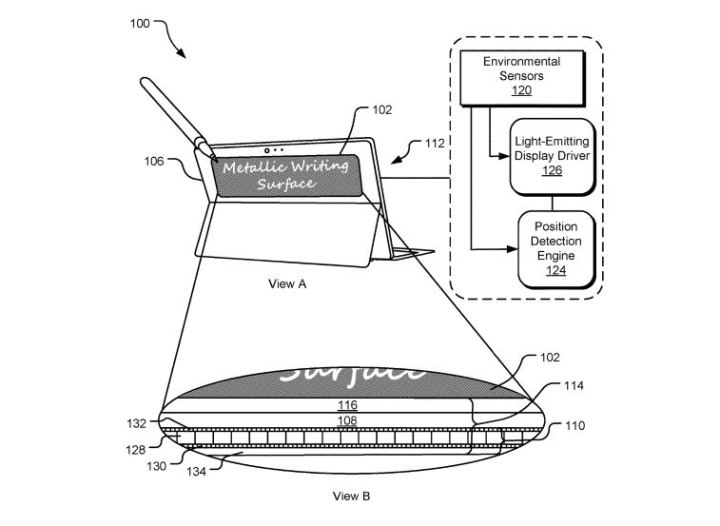
A Microsoft patent application for a new type of display was discovered and it looks like something that might one day change the way consumers interact with touchscreen Surface devices. Originally documented with the U.S. Patent Office on May 1, 2017, the now public patent showcases a “reflective multilayer structure to present information on the external surface” on a given sample device.
Though the reflective display patent does not specifically refer to any Microsoft products by name, its subsequent diagrams show would be considerations for a future device. In the patent abstract, a peculiar looking image of a Surface-like 2-in-1 comes complete with the words “metallic writing surface” illuminated on the rear.
As the patent puts it, that is just a way of rethinking the otherwise dead unused space on a computing device.
“Consumer demand for smaller and more powerful personal electronics devices drivers innovation to adapt existing device components for new and or multiple purposes. Many laptop computers and accessory keyboards include a surface area that does not serve a functional electronic utility,” explains Microsoft in the patent filing.
One proposed implementation of the reflective panel involves making a surface metallic so that it creates “uniformity in color and tone” between the display and other parts of the device. Touch also seems to be supported, with another implementation supporting the use of technologies so that a user can “draw on the reflective external surface with a finger or stylus and the underlying may selectively illuminate pixels at corresponding locations.”
A final proposed version of the reflective panel involves using it as a primary OLED, LCD or LED display while the device is closed.
“Although the reflective display is visible when the laptop is in the open position, the user, may in some implementations elect to fold the laptop into a closed position with the reflective display facing up to more directly view or interact with information,” details the patent filing.
Patents might not always hold up to be true, but this one seems to be impressive. It would not be the first time that Microsoft would be considering a new type of display. Previous patents for a single flexible display have also surfaced, suggesting it could be for the company’s upcoming Andromeda device.


